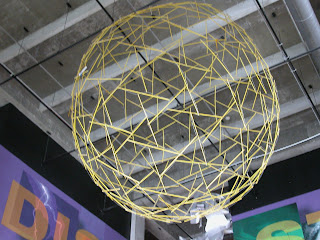 Ever wonder what 1,379 carats worth of cut and polished blue topaz would look like in your hand? Well, a lot like this. That's my hand to the left pictured with a very remarkable stone, a gigantic blue topaz.
Ever wonder what 1,379 carats worth of cut and polished blue topaz would look like in your hand? Well, a lot like this. That's my hand to the left pictured with a very remarkable stone, a gigantic blue topaz.This remarkable stone is a gorgeous clear blue color. Pure topaz is clear but most topaz stones form with some impurities that cause the stones to be colored blue, red, brown, yellow, gray, green and even pink. Pale and sky blue topaz are prized for jewelry pieces.
Although this stones seems enormous, it is certainly nowhere near the size of the largest known cut topaz stones. In Brazil, colorless pure topaz have been found in sizes as large as boulders. The largest cut topaz, also from Brazil, is the El-Dorado Topaz that is 31,000 carats. Another well known cut topaz, the American Golden Topaz at the Smithsonian is 22,892.5 carats.

Topaz is an 8 on the hardness scale of gemstones which puts it near the hardest and toughest stones known to man. Diamonds used for jewelry and even on saw blades are a 10 on the hardness scale. If you have topaz or diamond jewelry it should be stored away from other stones because it may scratch the surfaces of softer gems.
This stone was donated to MOSI by a gentleman in the late years of his life who wished to leave a legacy piece to a local museum. The stone is not currently on display in the museum so these pictures give you a special backstage peek at a truly beautiful gemstone.






 Liquids: One liquid forms the slow moving blobs, like in the picture, we will call this
Liquids: One liquid forms the slow moving blobs, like in the picture, we will call this 





